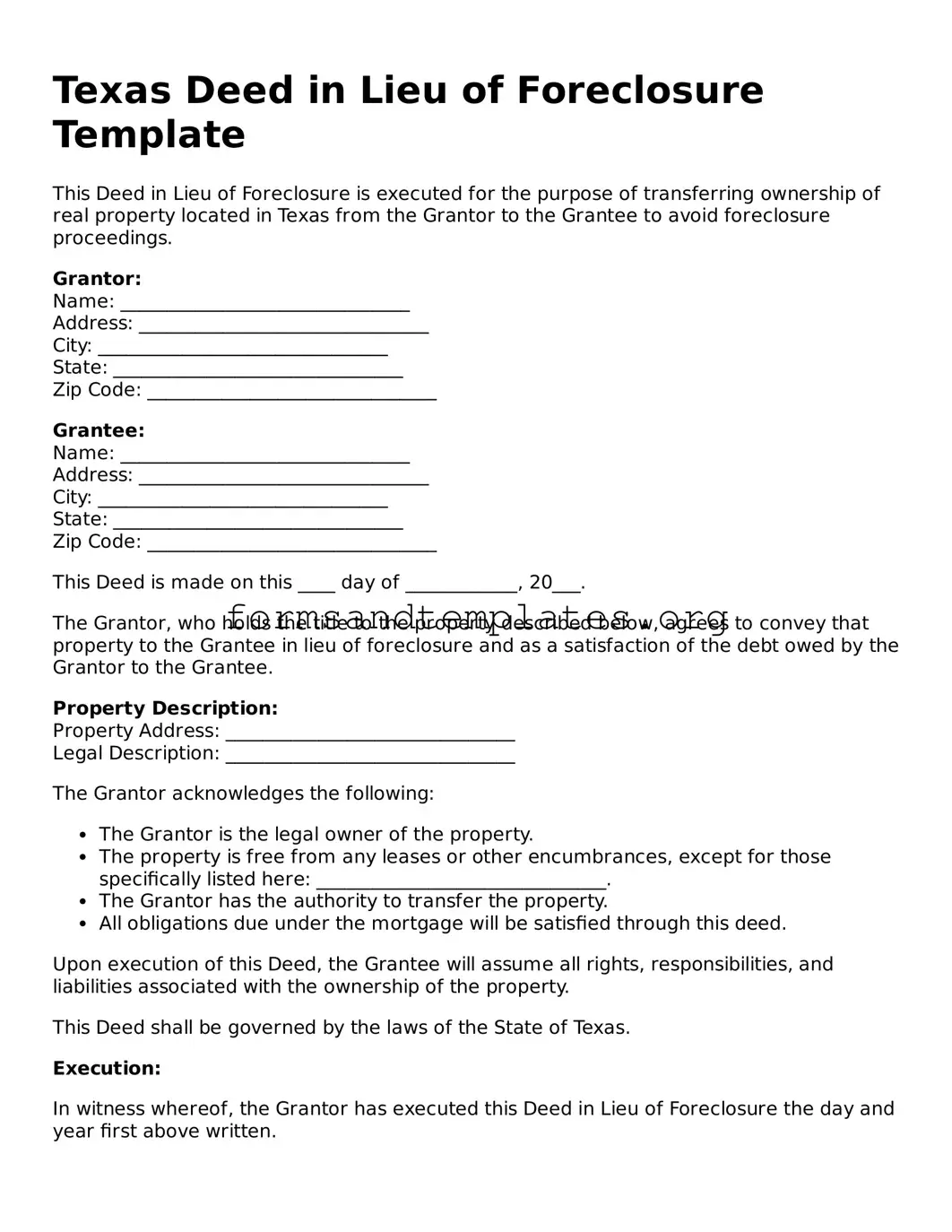Texas Deed in Lieu of Foreclosure Template
This Deed in Lieu of Foreclosure is executed for the purpose of transferring ownership of real property located in Texas from the Grantor to the Grantee to avoid foreclosure proceedings.
Grantor:
Name: _______________________________
Address: _______________________________
City: _______________________________
State: _______________________________
Zip Code: _______________________________
Grantee:
Name: _______________________________
Address: _______________________________
City: _______________________________
State: _______________________________
Zip Code: _______________________________
This Deed is made on this ____ day of ____________, 20___.
The Grantor, who holds the title to the property described below, agrees to convey that property to the Grantee in lieu of foreclosure and as a satisfaction of the debt owed by the Grantor to the Grantee.
Property Description:
Property Address: _______________________________
Legal Description: _______________________________
The Grantor acknowledges the following:
- The Grantor is the legal owner of the property.
- The property is free from any leases or other encumbrances, except for those specifically listed here: _______________________________.
- The Grantor has the authority to transfer the property.
- All obligations due under the mortgage will be satisfied through this deed.
Upon execution of this Deed, the Grantee will assume all rights, responsibilities, and liabilities associated with the ownership of the property.
This Deed shall be governed by the laws of the State of Texas.
Execution:
In witness whereof, the Grantor has executed this Deed in Lieu of Foreclosure the day and year first above written.
Grantor Signature: _______________________________
Date: _______________________________
Grantee Signature: _______________________________
Date: _______________________________
Witness Signature: _______________________________
Date: _______________________________
Notary Public:
State of Texas
County: _______________________________
My commission expires: _______________________________
